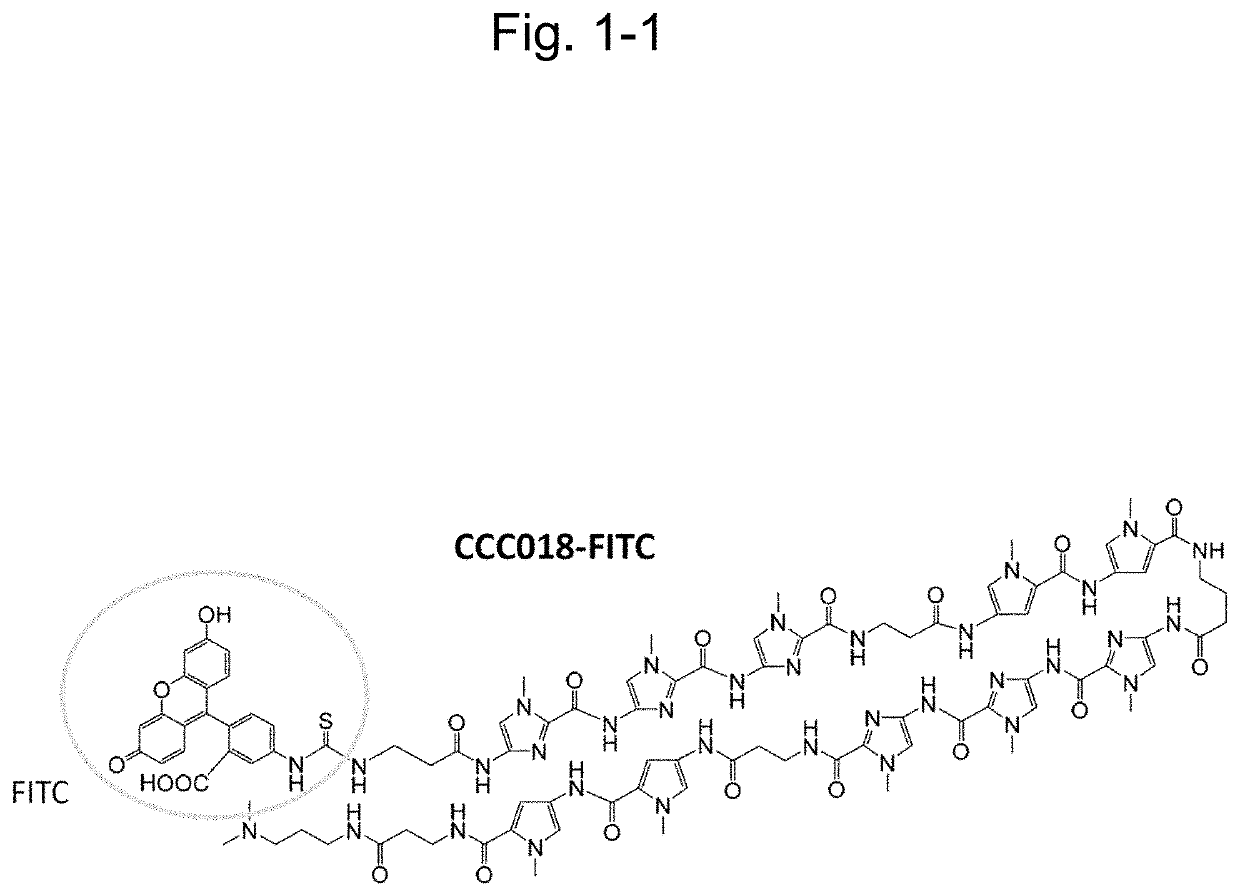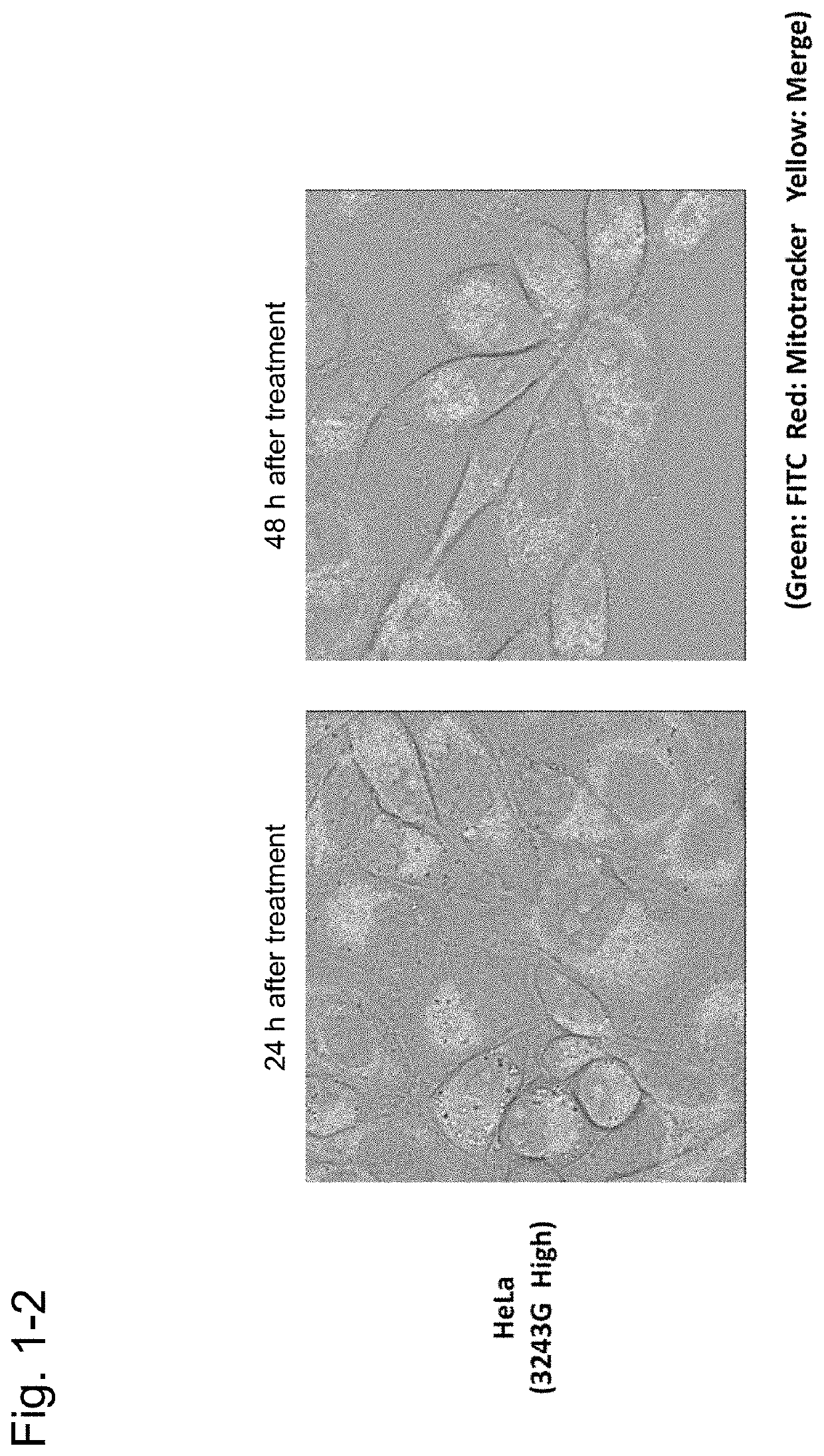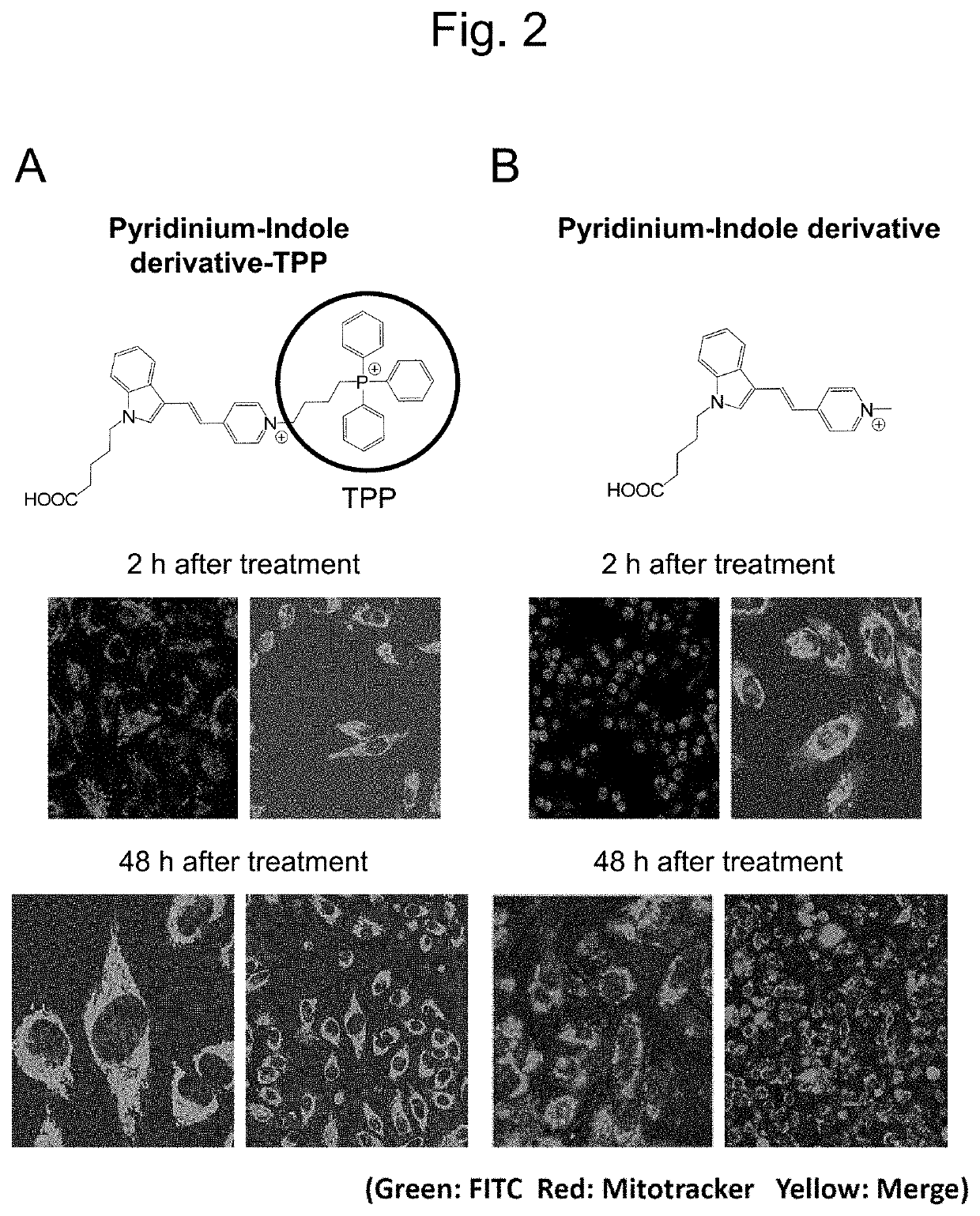Agent targeting double-membrane organelle DNA
a double-membrane organelle and compound technology, applied in the field of conjugation of low-molecularweight compound targeting double-membrane organelles, can solve the problems of undeveloped treatment method directly targeting mitochondrial dna mutation, and the method for efficiently inducing biological activity of cells with mutant mitochondrial dna has not yet been established, so as to reduce the number of mutant mitochondrial dna, reduce the number of mitochondrial dna, and minimize the influence
- Summary
- Abstract
- Description
- Claims
- Application Information
AI Technical Summary
Benefits of technology
Problems solved by technology
Method used
Image
Examples
example 1
[0247]Double-membrane organelle double-stranded DNA is present in organelles, for example, mitochondria or chloroplasts, present in eukaryotes including humans, animals and plants, and is deeply involved in the energy production of these organisms, such as respiration or photosynthesis, and also involved in the production of substances having biological and pathological effects, such as reactive oxygen species. This DNA is present in cytoplasm and outside a nuclear membrane and is therefore susceptible to damage, as compared with nuclear DNA, and has a property of facilitating new mutations accumulating. Such mutations accumulate with aging, falling into a state called “heteroplasmy” in which mutant mtDNA coexists with normal mtDNA in somatic cells of human adults. A given proportion or more of mutant mtDNA decreases mitochondrial functions and is responsible for the development of mitochondrial disease or the like. It is also known that mutations in mtDNA are responsible for not on...
example 2
Synthetic Lethality Experiment
[0300]Prior to the experiment, whether CCC021-TPP was localized in mitochondria in the cultured cell lines A549 and PC14 was examined by immunostaining using Mito Tracker RED and an anti-TPP antibody. The A549 cells and the PC14 cells were inoculated at 5×103 cells / dish and 1×104 cells / dish, respectively, to 35 mm glass base dishes (IWAKI, Japan), cultured for 24 hours, and then treated with CCC021-TPP (final concentration: 20 μM). Further, 24 hours later, the culture solution was discarded, and a DMEM culture solution containing Mito Tracker(R) Red CMXRos (Life Technologies, USA) was added to attain 100 nM. 30 minutes later, the cells were washed twice with PBS, then fixed in 4% PFA for 30 minutes, then medium-replaced with PBS, preserved at 4° C., immunostained with the antibody by the method described in Example 1, and observed under confocal laser microscope SP8 (Leica, Germany). As a result, TPP and Mito Tracker RED were colocalized, revealing that...
example 3
Skin Penetrability Confirmation Experiment
[0317]Outbred mice ICR were purchased from Oriental Yeast Co., Ltd. The experiment was conducted by the administration of linear-chain PIP-TPP (CCC149-TPP) having a molecular weight of 1274.7 to the mouse back. The back skin of each 5-week-old ICR mouse was shaved. After confirmation that the hair growth cycle was not reached, DMSO containing no PIP-TPP, and solutions of PIP-TPP (dissolved in DMSO, dissolved in 95% DMSO / 5% laurocapram (transdermal absorption promoter) and dissolved in 95% DMSO / 5% laurocapram 24 hours after stratum corneum removal) adjusted so as to attain 30 mg / cm2 were applied to 4 locations, respectively, of the back as shown in FIG. 28 at the age of 6 weeks. 18 hours later, the mouse was euthanized, and skin tissues were obtained and fixed in 4% paraformaldehyde. Then, paraffin blocks were prepared and co-stained by immunohistochemical staining with an anti-TPP antibody and DAPI staining of the nucleus to test the skin pe...
PUM
| Property | Measurement | Unit |
|---|---|---|
| Composition | aaaaa | aaaaa |
| Structure | aaaaa | aaaaa |
| Lipophilicity | aaaaa | aaaaa |
Abstract
Description
Claims
Application Information
 Login to view more
Login to view more - R&D Engineer
- R&D Manager
- IP Professional
- Industry Leading Data Capabilities
- Powerful AI technology
- Patent DNA Extraction
Browse by: Latest US Patents, China's latest patents, Technical Efficacy Thesaurus, Application Domain, Technology Topic.
© 2024 PatSnap. All rights reserved.Legal|Privacy policy|Modern Slavery Act Transparency Statement|Sitemap



